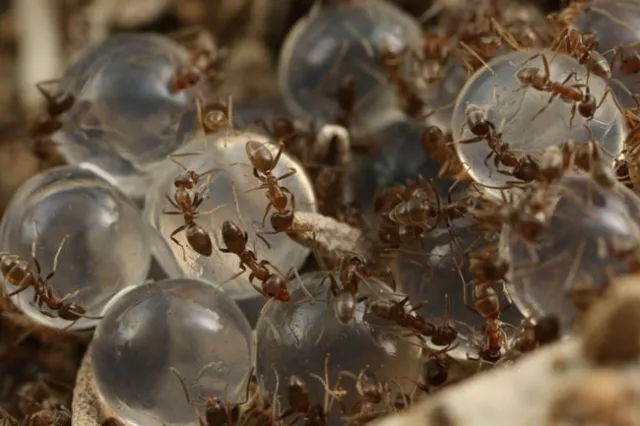The Argentine ant is the most widespread species of invasive ant, thriving in urban areas, agricultural settings and nature parks on every continent except Antarctica. The species can form "supercolonies" that link hundreds of nests and millions of workers. While Argentine ants do not bite or sting humans, they can be a nuisance in buildings and cause economic and ecological damage to agricultural businesses and natural areas where they outcompete native ant species.
In orchards and vineyards, the Argentine ant is a stalwart defender of aphids, scale, and mealy bug, which excrete a sweet honeydew that the ants drink. The ants protect the pests from parasites, predators and parasitoids, allowing them to flourish and cause other problems such as sooty black mold, a dark fungus that can block leaves' access to sunlight, scaring fruit and reducing yield. The ant is a major problem in such crops as cherimoya, pitahaya and passion fruit which have few registered chemicals for use commercially. They are the major cause for use of pesticides in coastal lemon orchards.
A new technique for controlling Argentine ants has been developed using hydrogels, allowing for precise control of this pest with little impact on other species. The hydrogels have a sugar solution for attracting the ant and can be laced with a variety of pesticides, both conventional and organically-approved. The baits, though, have a fraction of the normal amounts of pesticides that are registered for foliar or ground applications, reducing pesticide load on the environment and disruption of biological control. And they can be registered on some of these orphan crops like sapote. And in one case, the hydrogels are made of biodegradable algae.

Argentine Ants Feeding on Sugar-infused Hydrogels
https://ucanr.edu/blogs/blogcore/postdetail.cfm?postnum=27502
https://www.universityofcalifornia.edu/news/using-seaweed-kill-californias-least-favorite-ant

